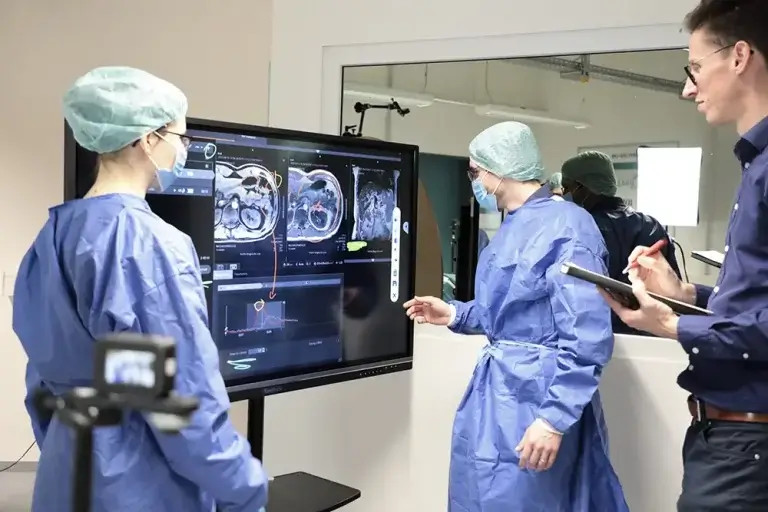Introduction – Navigating the Technical Terrain of User Research Field Studies
User research field studies are essential for understanding how users interact with their products in real-world environments. In our daily work with high-tech and complex products and critical HMI-systems, we continually face the challenge of providing deep insights that surpass the traditional boundaries of conventional user research. This is achieved by focusing on meticulous technical preparation and execution to ensure the integration of proven methods with the specific setups of the existing use environments in which we observe and interview users. This blog post explores the crucial technical considerations that ensure every observation and data point collected during our user research field study is accurate, secure, and valuable.
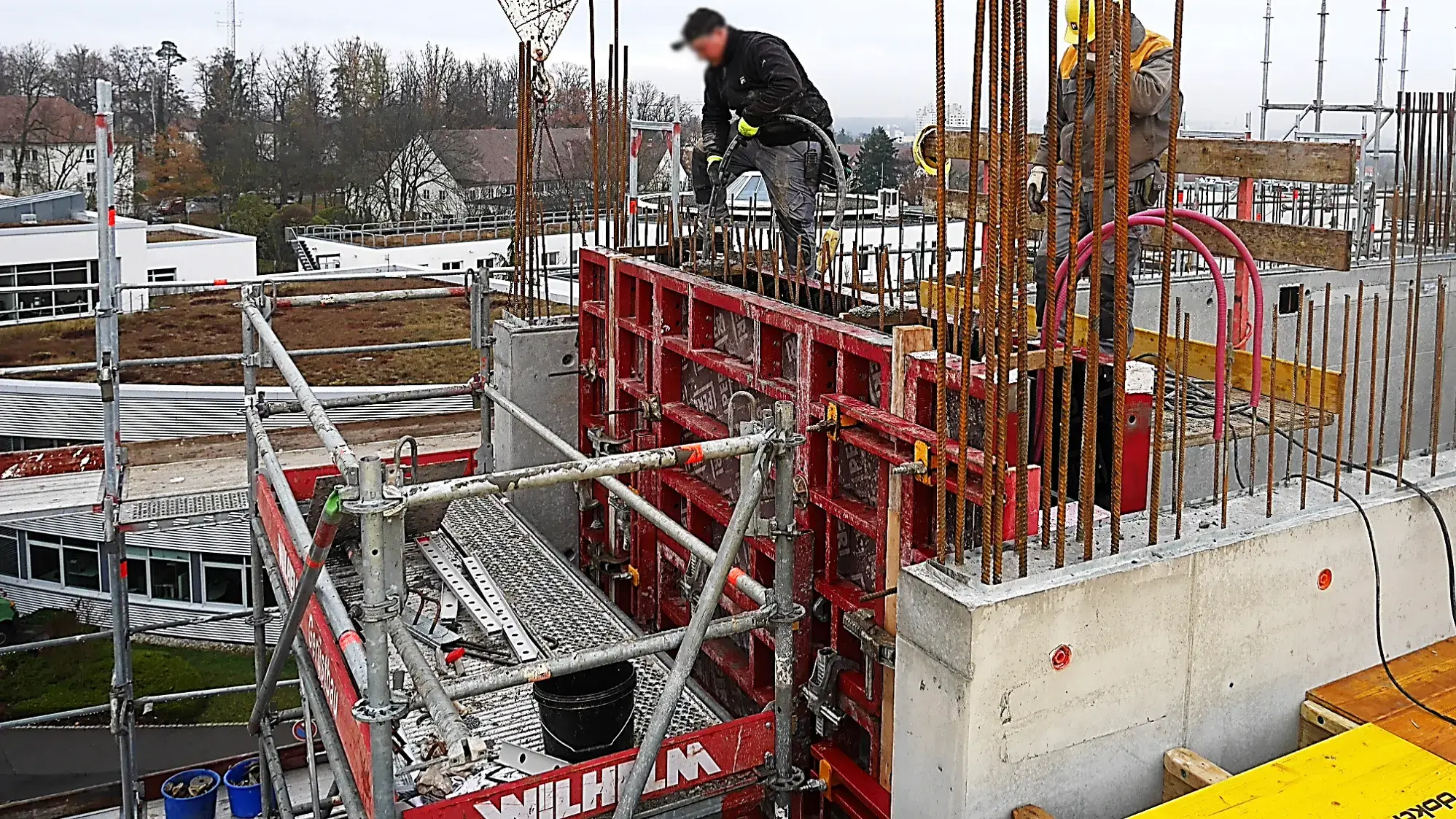
Ensuring Pristine Audio Quality: Hear Every Detail
Audio clarity is crucial for obtaining accurate user insights. Clear audio recording ensures that nuanced user interactions, comments and feedback is ceptured effectively. Poor audio quality can obscure user responses and lead to misinterpretations that skew the study’s results in worst case scenario. To counteract this, we use high-quality clip-on microphones adept at minimizing background noise and enhancing speech clarity. Depending on the workflow and the cooperative tasks, it is necessary to track more than one user in parallel. Having enough microphones on site, as well as a backup, saves essential time by avoiding the need to reconduct and repeat observations due to the inability to track every user’s voice simultaneously. Techniques such as placing lapel mics on participants, along with strategically positioning ambient microphones, ensure that every spoken word is captured with precision, as well as the noise levels surrounding the observed human-machine interaction. To ensure everything runs smoothly as soon as the observation starts, a technical check of charging levels and audio channel activations via laptops and tablets, dedicated to technical monitoring and settings, guarantees reliability and quality.
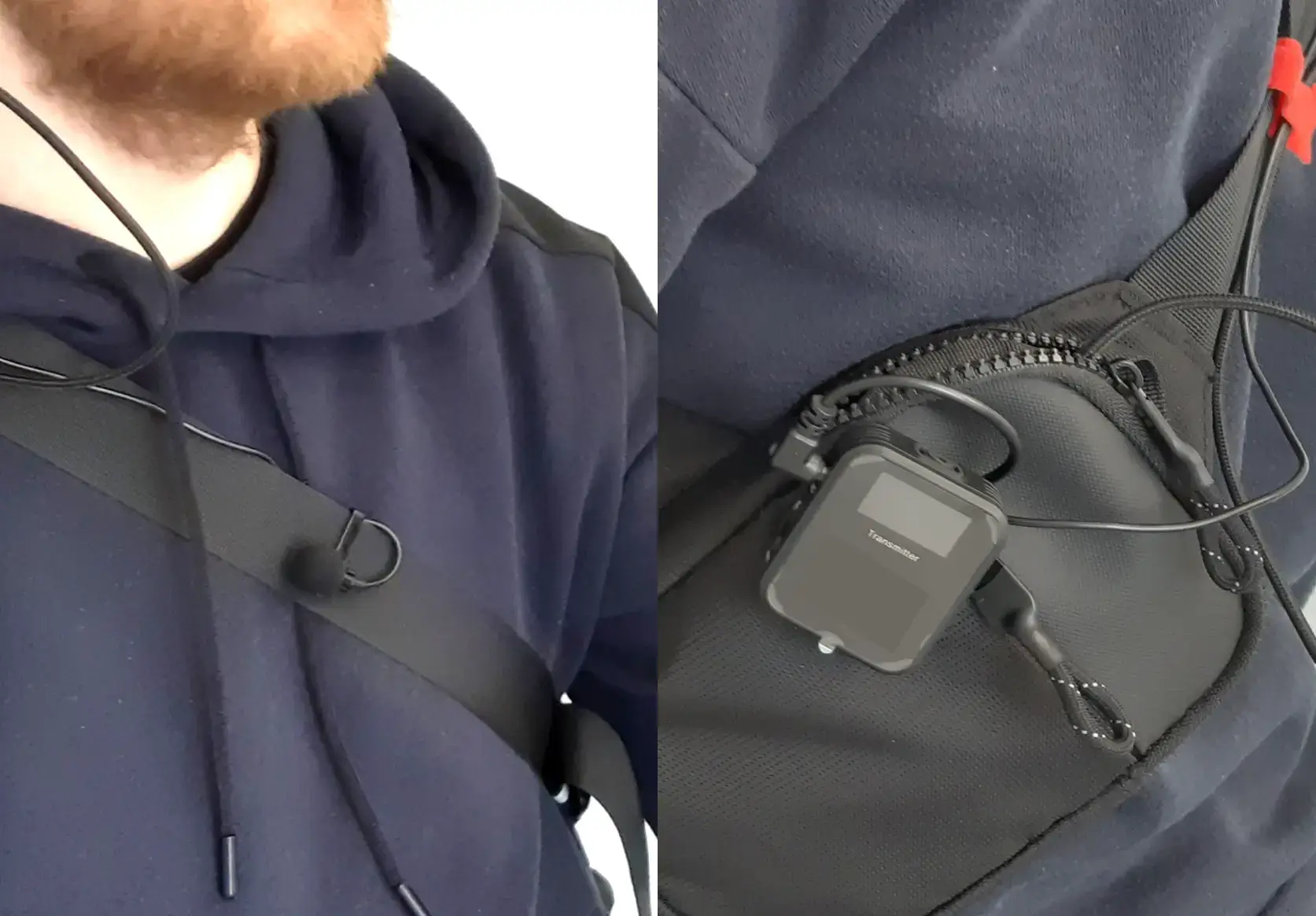
Example Scenario
Consider a study conducted in a busy production plant where multiple conversations and the background noise of machinery could interfere with the participants’ feedback. By employing directional microphones and adjusting their sensitivity, we can effectively isolate the participants’ voices, ensuring that critical insights are not lost in the ambient noise.
Comprehensive Video Coverage: See the Full Picture
The optimal use of camera configurations ensures comprehensive visual insights. Video documentation in user research field studies offers a visual account invaluable for later analysis. It allows researchers to observe non-verbal cues and interactions that might go unnoticed in audio-only recordings. We recommend employing multiple camera angles to capture a full spectrum of interactions, ensuring that nothing is missed. Our practice involves using both fixed and mobile camera setups to provide comprehensive coverage that brings every user interaction into focus. This can be achieved with tall camera stands that provide a bird’s eye view, combined with eye-tracking and POV (point of view) glasses with cameras, as well as mobile cameras on gimbals. If interactions on specific static user interfaces are of interest, cameras that allow a detailed view of these interfaces might be closely attached to these interfaces via holders.
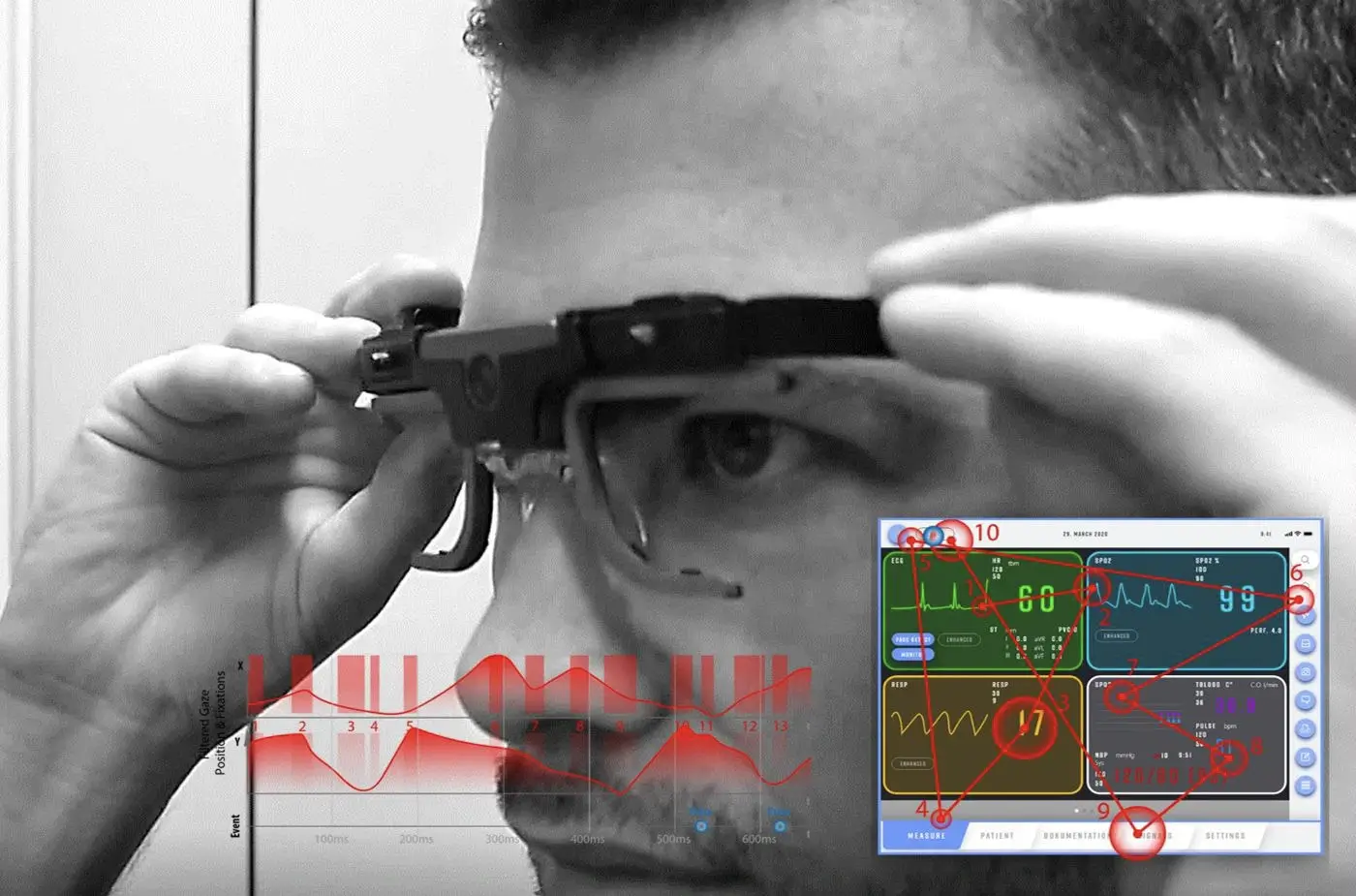
Example Scenario
In a field study observing the use of a new handheld device, cameras are strategically positioned to capture both the participant’s facial expressions and hand movements, along with a head-mounted camera that provides insights into the overall attention of the user. This multi-angle setup allows analysts to observe how users physically interact with the device, focusing on their attention and emotional reactions, thereby offering a comprehensive view of the user experience.
Synchronization of Data Streams: A Unified View
Streamlining data is essential for cohesive analysis. Synchronizing audio, video, and other data streams is crucial for creating a cohesive understanding of user interactions. Time-stamped data enables researchers to align insights from various sources accurately, enhancing the analysis process. At USE-Ing., we utilize advanced synchronization software that integrates all data streams in real-time, ensuring that every piece of information is contextualized within the broader scope of the study. This approach is particularly useful when multiple data streams are recorded and captured in parallel, potentially saving significant time during the analysis phase later on.
Example Scenario
During an observational study at an aircraft maintenance training session, audio recordings of the instructor, video of the trainees, and digital logs of the training software are synchronized. This allows us to analyze how instructions are followed and identify any discrepancies between the spoken directives and the actions taken by trainees.
Procedure Documentation: The Blueprint of Success
Detailed checklists and procedure descriptions guarantee flawless execution and reproducibility. Accurate documentation of the research procedure ensures consistency and reproducibility, which are crucial for validating the study’s findings. Our method includes comprehensive checklists and step-by-step guides that cover every phase of the research—from preparation to execution and post-study analysis. This meticulous approach ensures that every team member understands their role and responsibilities, reducing the likelihood of errors and oversights. Like a precisely ticking clockwork, the entire research team can work together effectively and efficiently during the research study trip thanks to a well-structured check-up conducted just before. This allows each member the mental space to focus on the substantive and methodological aspects of the observation.
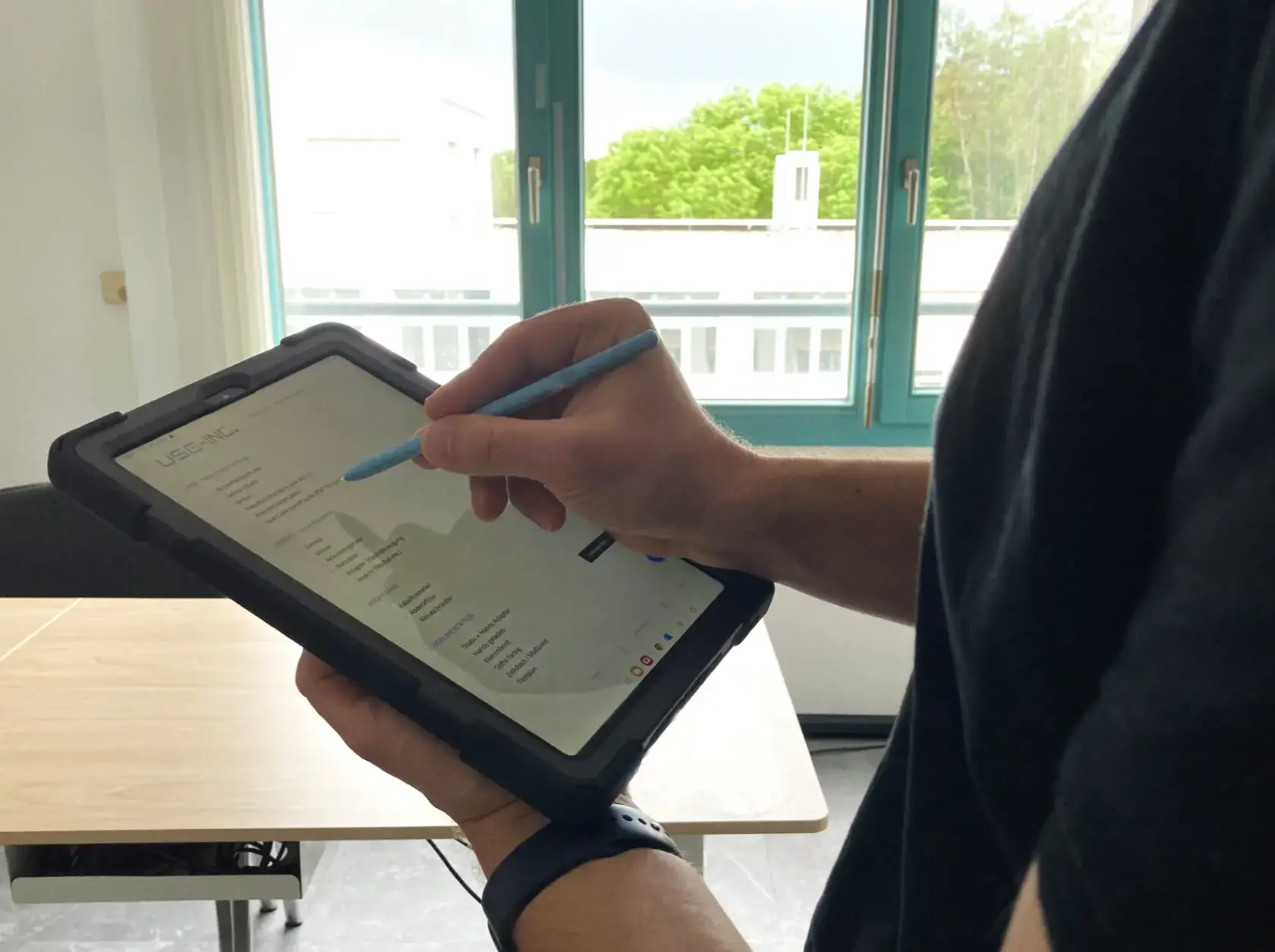
Example Scenario
In a multi-phase study evaluating user interaction with a new surgical device, each step from the setup of the operating room, through the actual operation, to the post-operation analysis is documented. This not only ensures that procedures are followed precisely but also aids in training new researchers and providing clear data paths for follow-up studies.
Data Security and Privacy: Safeguarding Sensitive Information
Ensuring robust protocols for protecting user data is a state-of-the-art responsibility for today’s user research professionals. In today’s digital age, securing personal and sensitive data is more critical than ever, especially in user research, which often handles large volumes of personal information. We adhere to stringent data security protocols, including encrypted data storage, secure data transfer processes, and compliance with global privacy regulations such as GDPR. The process begins well before the actual site work—starting from when the consent for data captures is planned and requested, documents are prepared, and participants are briefed. This proactive approach helps both the research team and the participants feel comfortable in their roles onsite, enabling them to adhere to the research plan without the need for onsite improvisation. Our commitment to data security not only protects our research but also builds trust with participants, ensuring they feel safe and respected throughout the study..
Example Scenario
When conducting field studies that collect sensitive health data from participants, we need to take care that consent is given before and all data are encrypted at the point of collection and transmitted to our secure servers via encrypted channels. Access to this data is strictly controlled, ensuring that only authorized personnel can view or analyze the information, maintaining participant confidentiality and data integrity.
Conclusion – Mastering technical aspects for Insightful Outcomes
By focusing on these five key areas, we ensure that every study is built on a foundation of technical excellence that leads to reliable and actionable insights. These insights did not come overnight, nor did the optimization of the processes and procedures associated with them. Rather, it has been a journey of constant learning and improvement through many years of experience and practice. We understand that the success of a user research field study hinges not only on methodological expertise but also on how well the technical aspects are managed, which are subject to constant change. Therefore, we are committed to continuously reflecting on and adjusting our approach as opportunities for improvement are recognized. Our team looks forward to these future experiences.
In embracing these principles, we invite you to join us on a journey toward a deeper understanding and enhanced user experience, where every technical detail is a step towards perfection in practice.
Stay tuned for more insights and behind-the-scenes looks at how we are pioneering the future of user research and usability engineering.

